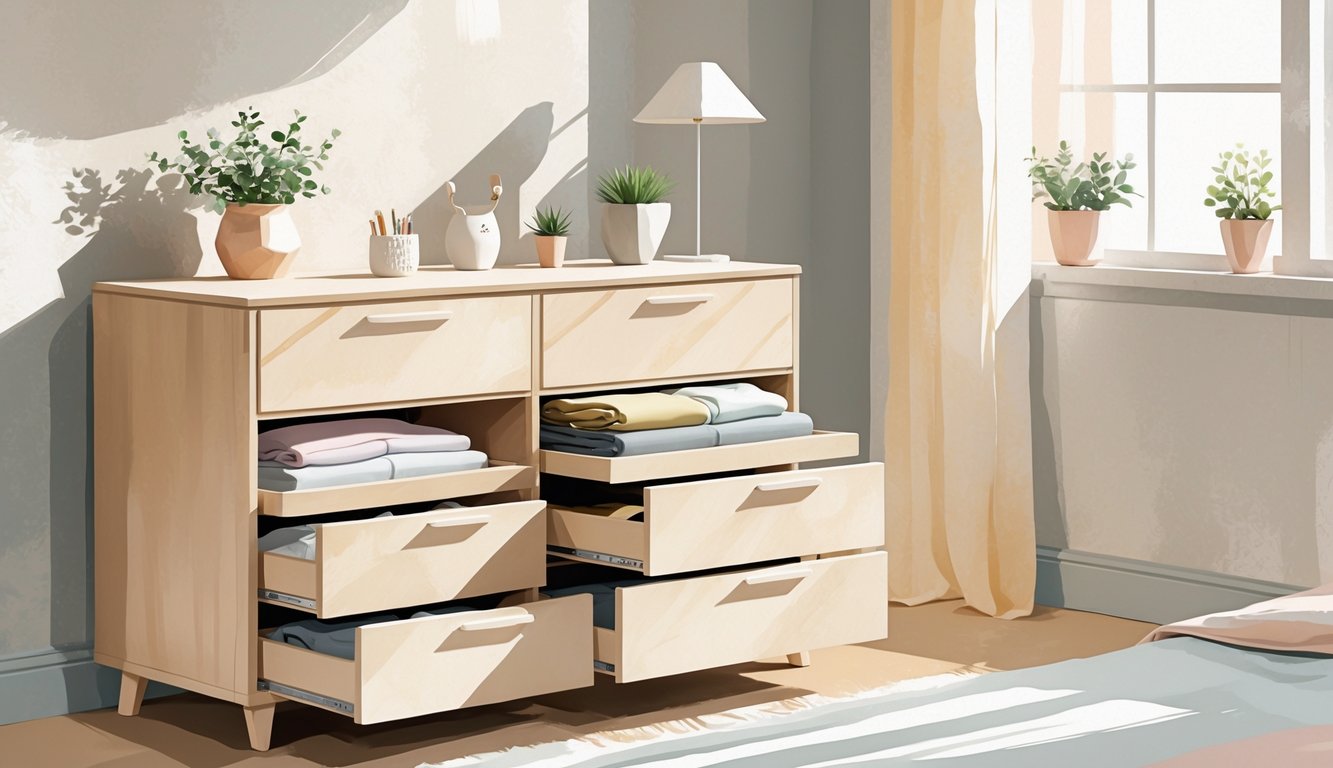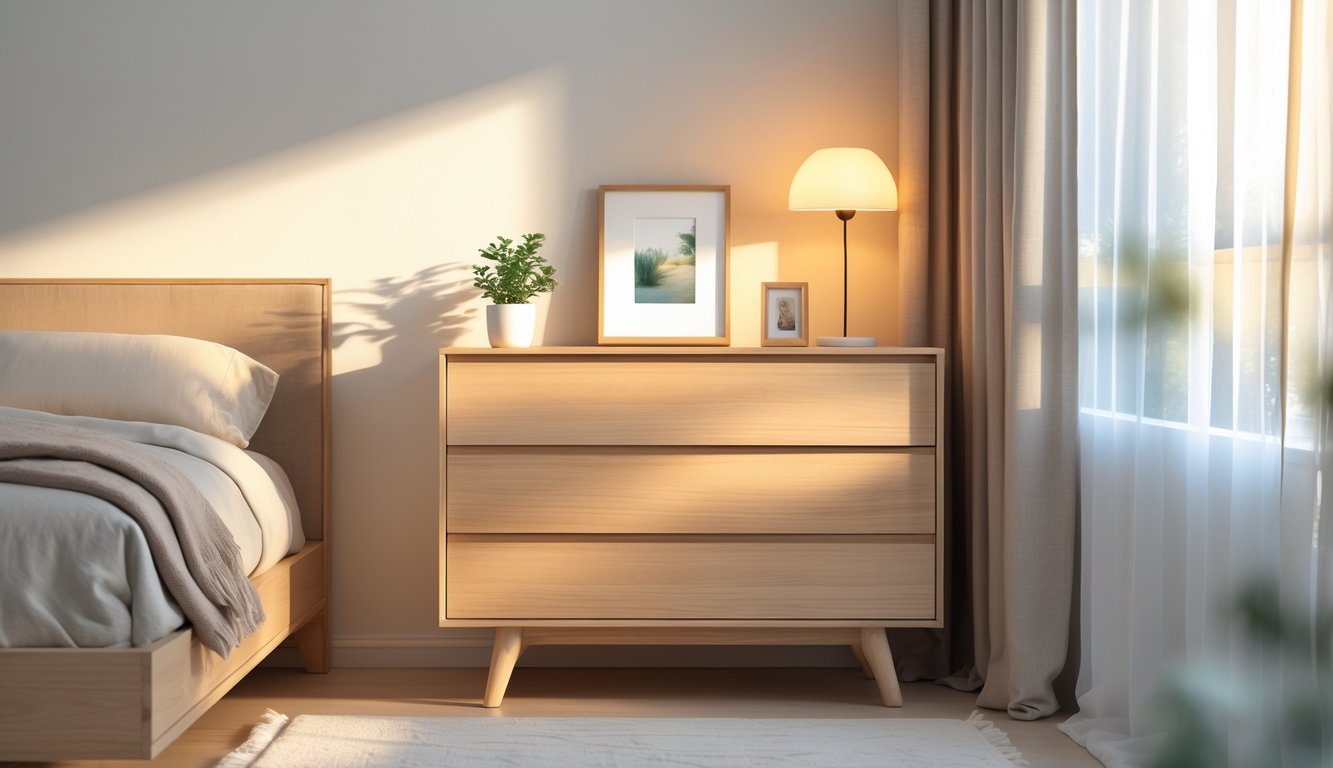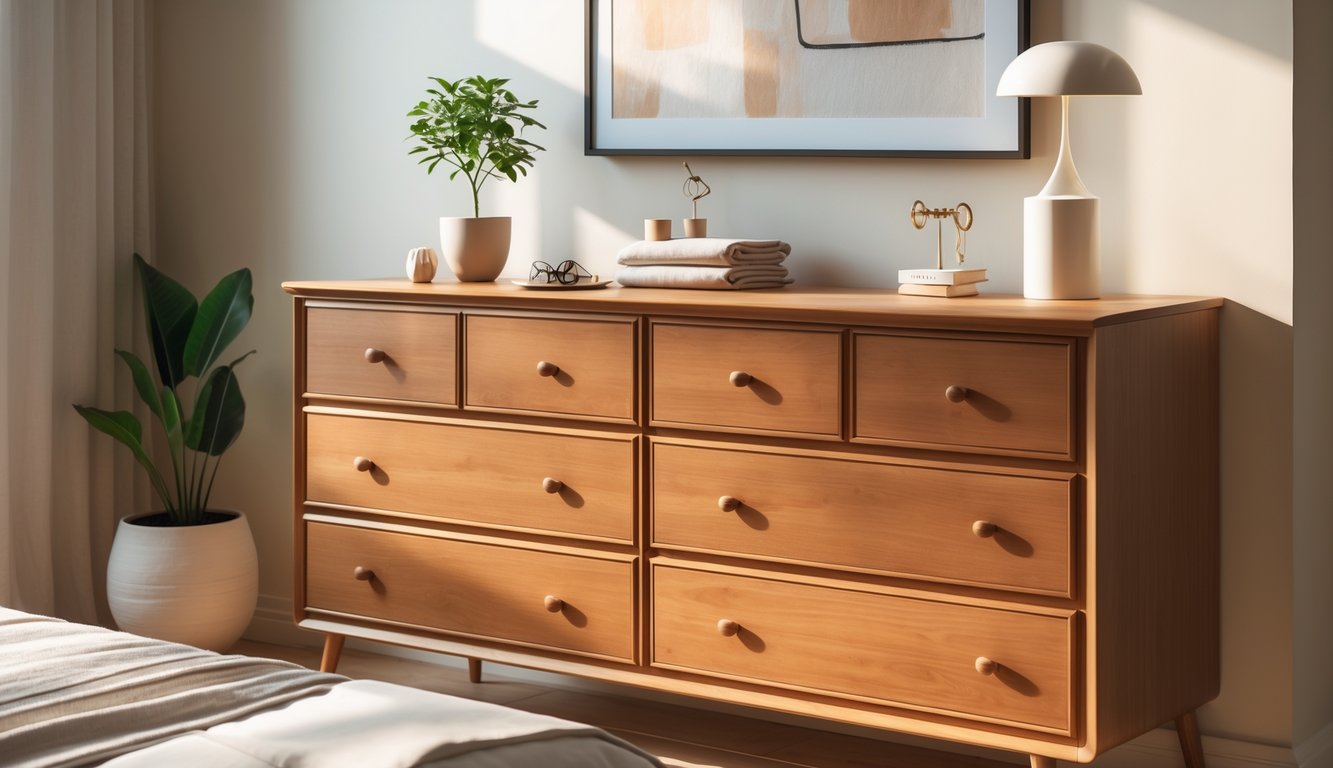
Okay, listen, jammed dressers make zero sense. I mean, how does every drawer turn into a graveyard for socks and sweaters before I’ve even finished laundry? Then I see stylists on TikTok or wherever, promising some “one small upgrade” will fix my life. I’m skeptical. But—get this—apparently, it’s not about shoving more organizers inside. Nope. The trick (if you believe Lauren Shaver, and I kinda do) is styling the top of your dresser. Like, actual trays, a plant, maybe a candle, not just another bin. She swears her drop zone chaos just… stopped. I dunno. Maybe.
What’s wild is nobody ever says out loud that overstuffing isn’t just about space. I’m late four days a week, minimum, because I can’t find a sock. Experts keep saying to ditch the extra dresser and get a single, well-organized one—custom liners, zones, the works. (Here’s a post with visuals if you care). Monogrammed trays? I’ve seen them. They look fancier than my old “tangled charger basket.” Lisa, my friend, still uses her dresser as a mug graveyard though, so who knows.
Honestly, just buying more drawers or baskets is like bailing out a sinking ship with a spoon. Nobody wants to hear that, but it’s true. Add a shelf, buy a bin, still can’t find my favorite tee. Stylists keep hammering this—organize your habits, not your furniture. But the missing sock from last year? Still MIA. Even the best dresser can’t solve that one.
Why Every Bedroom Needs a Single Dresser Upgrade

Every time I buy new joggers or realize I’ve got, like, five nearly identical black tees, my room just explodes. Surfaces vanish. The only thing that’s ever worked? Swapping my sad storage bin for a solid, single dresser. It’s not magic, but it does more than just hold clothes—it actually makes me less messy. Well, sometimes.
How Dressers Prevent Clutter
Clutter is relentless. One rogue sock, and suddenly I’m living in chaos. But a decent dresser—drawers that actually glide, not those ones that stick and make you want to scream—somehow keeps things in check. I don’t know why. Maybe it’s the zones. Kylie’s designer (yes, I follow her, don’t judge) says deep drawers for sweaters, shallow for accessories. Jeans, underlayers, spare receipts—each gets a spot. I even found a home for my linen spray. Earplugs? Still lose those, but not as often.
There’s logic to the design, apparently. Vertical space means more capacity, less dust, and—supposedly—no more pajama pants on the floor. Except, let’s be real, chaos just hides elsewhere. (Under my bed, mostly.)
The Stylist Perspective
Stylists hate clutter. It’s like an allergy. They walk in, eye my sad nightstand, and ask why I haven’t upgraded to a single, streamlined dresser. Minimalist, neutral, roomy—non-negotiable, they say. Not just for looks, but because it makes you form better habits. Emma Collins (she’s big on Instagram) says, “A dresser controls what you see. Out of sight, out of mind.” She’s not wrong. If my shirts are buried under cables, I can’t plan outfits. And, yeah, having the “right” dresser means one less excuse for missing socks.
But it’s not just about hiding mess. Apparently, the top of the dresser is for display. Sunglasses trays, perfume, a little valet thing—now it’s a boutique, not a laundry cave. There are more dresser ideas online than I’ll ever try. Also, pro tip: metal runners or bust. Drawers that stick are the worst.
Key Features of the Ideal Single Dresser

Seriously, I just stare at my mess and think, “This is why I can’t have nice things.” A good dresser actually helps. Drawer layout matters more than I thought. Durability beats whatever’s trendy. And, honestly, looks matter more to me than I admit.
Optimal Storage Solutions
Everyone’s got their own chaos—jeans, socks, ancient college tees. I want a horizontal dresser, six deep drawers minimum. Vertical ones? They just make me cram stuff and lose everything. Drawers too small? Disaster. Soft-close runners are a must.
Sara Rose (maybe you follow her?) says label dividers inside drawers for ties, accessories, whatever. Minimalist lines mean more space, less dust. Neutral colors blend in, which, I guess, helps. (Minimalist dresser guide here). Mirrors on top? Nope. I’m not dusting around bottles all week.
Materials That Last
Particle board? Hard pass. My friend does woodworking and says it’s a trap. Solid wood—oak, maple, whatever—survives life and humidity. Metal pulls, reinforced joints, all that. I read in a dresser guide that engineered woods can last, but you can’t refinish them, so what’s the point? Water rings are real. “Easy cleanup” is a lie if you hate chemical smells. Best dressers are the ones that don’t fall apart—vintage or legit brands win.
Style Meets Function
Function’s important, but if my dresser looks like hospital furniture, I’m out. Not every room needs mid-century modern, but a curved corner is nice (less shin bruising). Matte black handles, walnut grain, maybe a pop of color inside—way better than tacky liners.
Stylists go on about unified design, but even a basic dresser with clean lines helps. (This dresser guide says tall dressers fake more space. Maybe? Unless you pile hats on top like me.) Don’t chase trends. Pick something you’ll still like after three bedspread swaps. Symmetry in drawers tricks me into thinking I’m organized. I’m not, but hey, it looks that way.